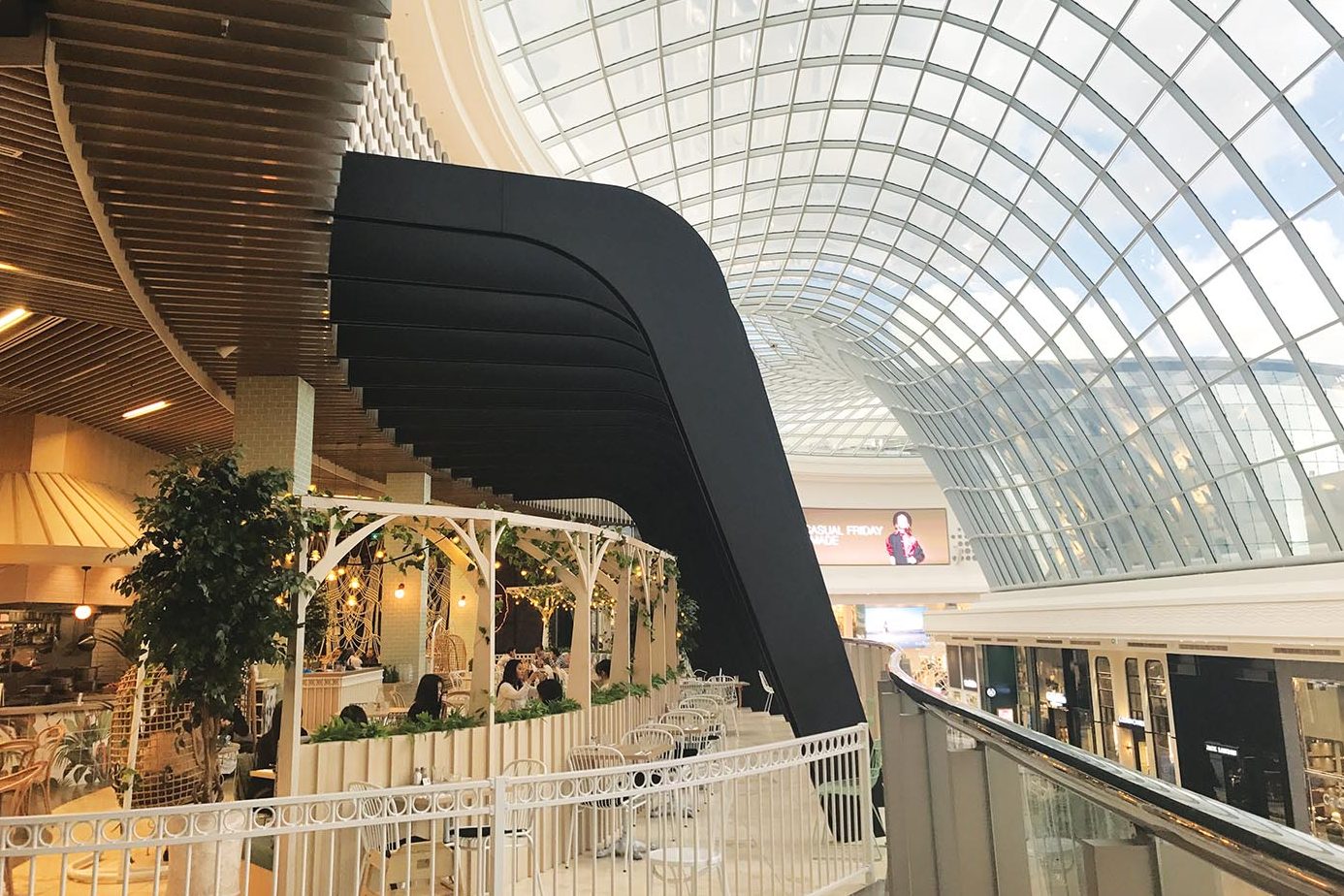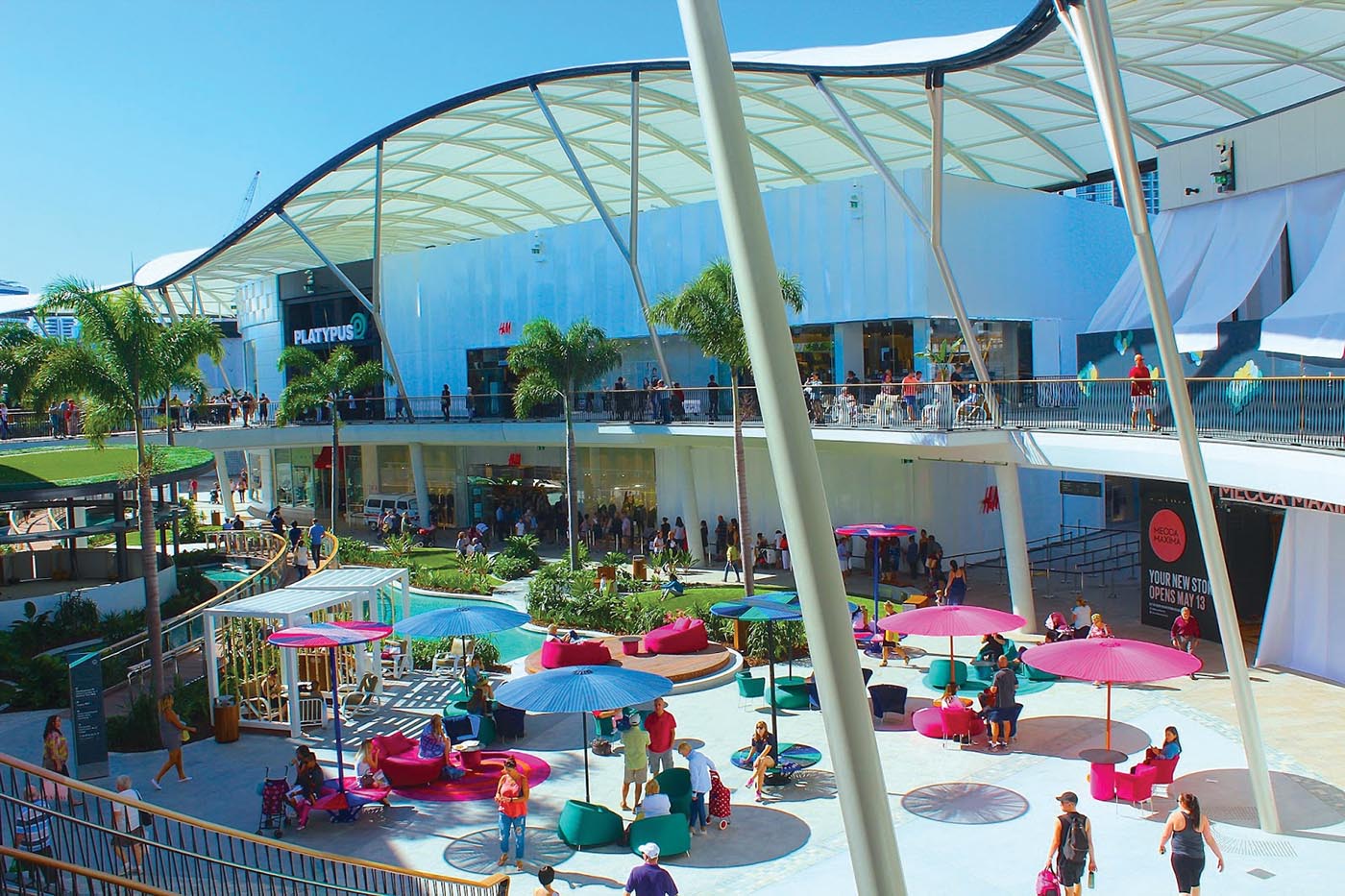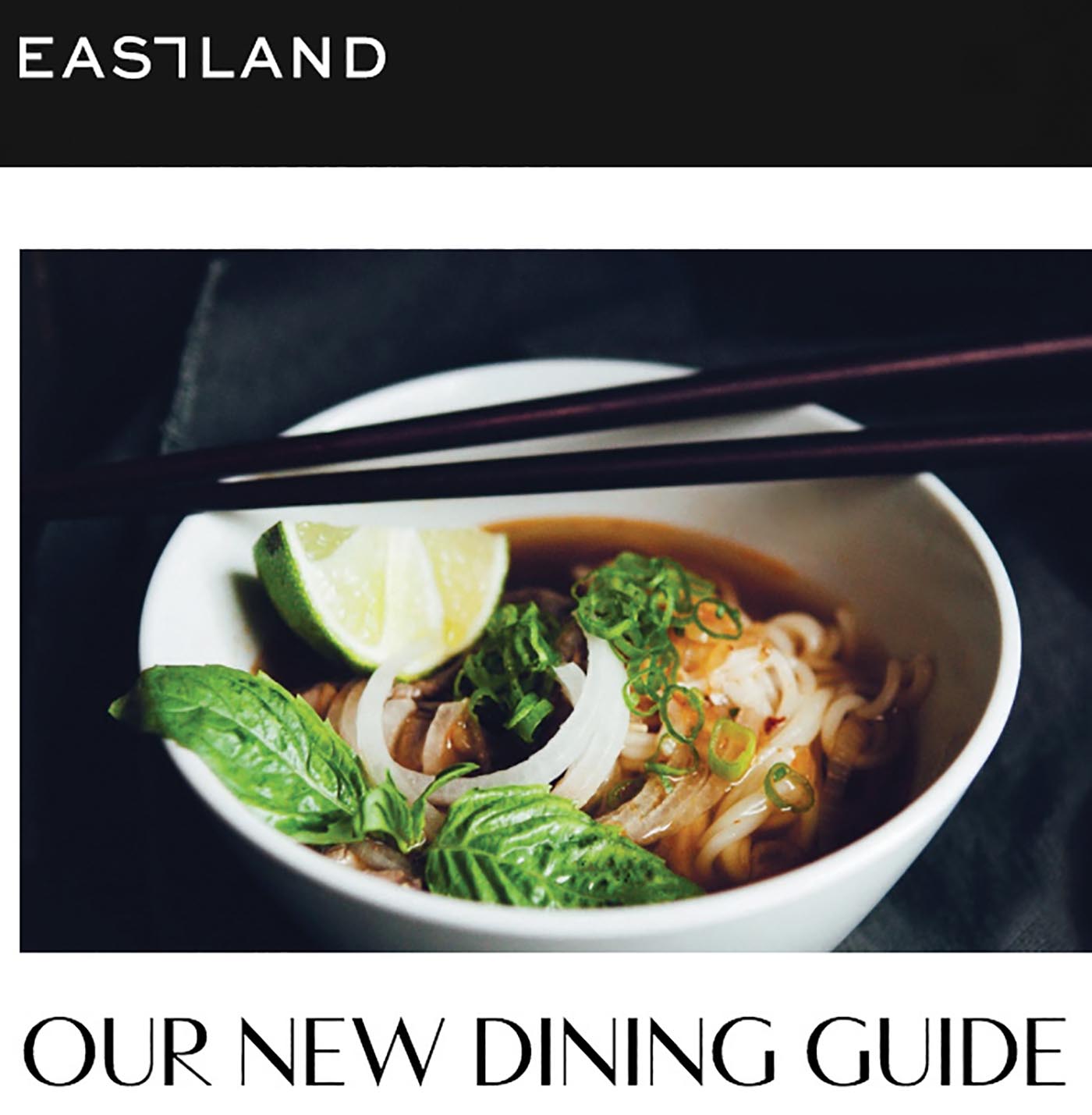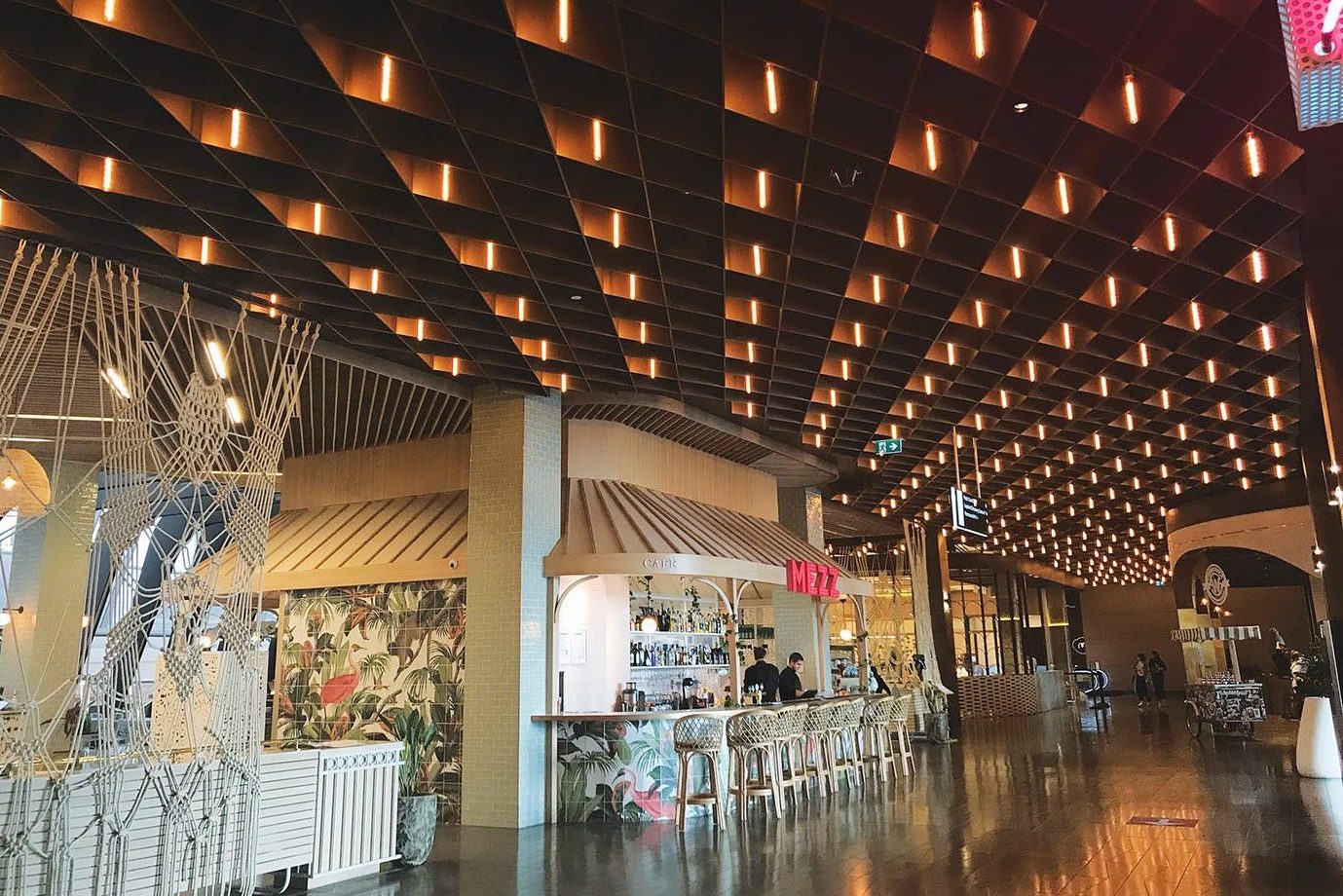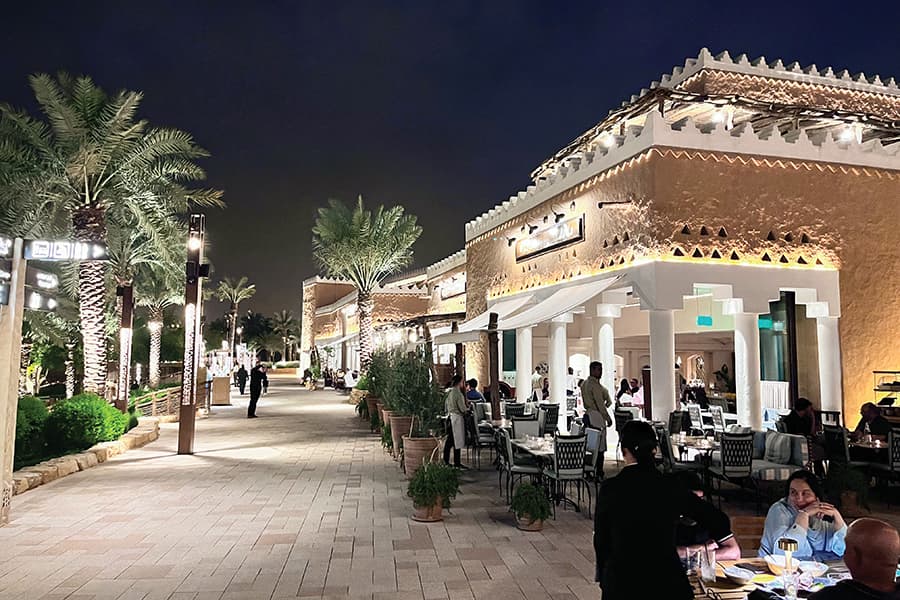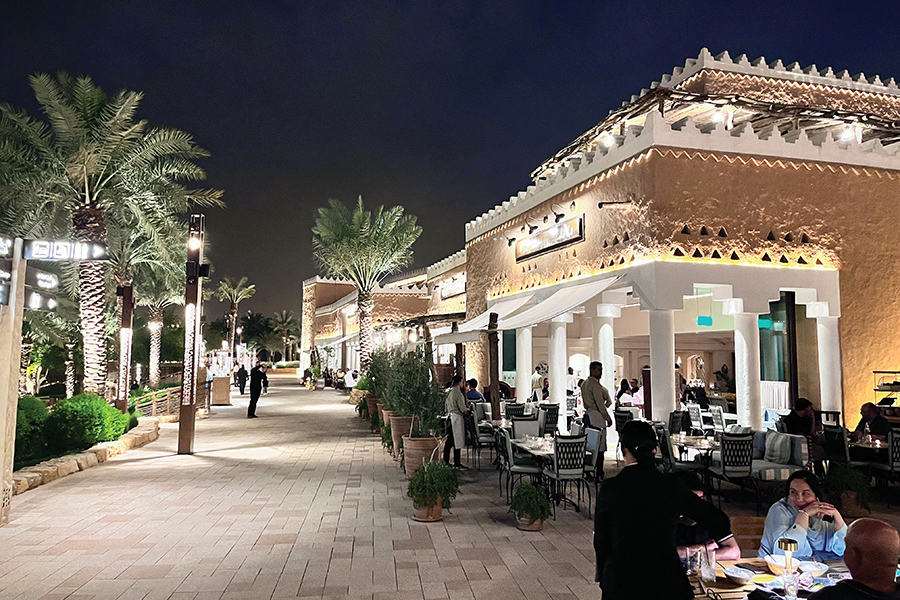There’s a lot about food and hospitality in this issue; it’s forefront in our minds. Francis Loughran, in this second of a two-part article, looks at the global scene.
When ordering retail online, the purchase is cut and dry and it is a pre-determined spend; however when it comes to bricks-and-mortar food and hospitality, the spend potential is limitless. Let’s look at how food and beverage within malls globally is driving food and retail sales.
In part one we spoke about how, as customers, we yearn for social interaction. We also looked at how food and hospitality in malls is specifically being masterplanned to satisfy the wants and needs of the modern customer by providing a range of highly designed food and hospitality experiences. Food and beverage has been viewed by many within the industry as a possible solution to the challenges of increasing vacancy rates on both the high street and in the mall. By providing more shops to ‘internet proof’ food and beverage operators, landlords can reduce the risk of being over-reliant on specialty retailers.
Shop online, pick up at the mall… oh, and eat and shop during your visit
Whilst today’s hungry customer may shop online for food or retail purchases, the real opportunity to maximise spend and to create a positive impression for your mall is to ensure the customer visits the mall. Ordering online is not disruptive to centre activity, provided the customer visits the mall to pick up the purchase. It supports the customer being ‘connected’, while at the same time allowing them to enjoy the many benefits of the bricks-and-mortar shopping mall.
By providing a ‘click and collect’ customer experience, the mall benefits from additional footfall, thereby maximising food, hospitality and retail sales.
This is a proven approach in the UK where the penetration of Amazon and other online retailers is much higher than it is here in Australia. This strategy is currently being played out by British Land, a UK developer with nearly 1.7 million square metres of retail space under management across 106 centres. They base their corporate strategy around ‘Creating Places People Prefer’. As such, placemaking lies at the heart of what they do. They deliver on these goals by focusing on four key drivers, as put by them: ‘We Connect, We Design, We Enhance, We Enliven.’
Consumer research at British Land centres has found that click-and-collect customers overall spend double what non-users of the service spend. This effect flows on to the food and beverage offer where click-and-collect customers spend 11% more on food and beverage.
The embrace of online is a vital step in the evolution of shopping centres as they adapt to changing consumer habits. The creation of beautiful food, hospitality and entertainment precincts within malls globally is making them very attractive places to visit and to dwell. In doing so, hospitality within malls has now proven to be one of the key factors in maximising spend and the ‘stay longer, spend longer’ trend is shaping how developers will masterplan, design and program food and hospitality in malls across the world.
Klepierre, the Paris-based owner of nearly 200 shopping centres across Europe, tells its stakeholders that it “no longer operates in a material world, but in an experiential world”.
The company sees that there are five themes that influence shopping mall strategies:
1. Food is fun
2. Digital
3. Time is of the essence
4. Sharing social communities
5. Customers’ engagement.
Of these, the only tangible component is food, which they see as “becoming the glue that holds retail together”.
As department stores and some mini-majors struggle to evolve to maintain their relevancy, around the world we see the combination of entertainment, food and hospitality as a viable new anchor. At significant new developments across the globe, not only is the space devoted to food and beverage significantly large, but mall owners are using this development as their lead marketing tool.
Fashion forward might be the spending that underpins turnover per square metre, but food forward positioning is what brings people together and puts them in the mood to spend.
At the Hudson Yards project on Manhattan’s west side, a 3,200m2 ‘gathering place, celebrating all things Espana’ will anchor one of the prime areas of the development.
The new Mall of Scandinavia in Stockholm advertises its 8,200m2 Dining Plaza, featuring 22 restaurants and cafes, as the largest cluster of restaurants in Sweden.
With Westfield’s redevelopment of Century City mall near Beverly Hills in Los Angeles, the UTC centre in San Diego and Valley Fair in Silicon Valley, the amount of space devoted to food in the revamped centres will double.
These precincts tick all the boxes when it comes to satisfying the growing desire for experiences, which then results in increased dwell times and increased retail expenditure.
In London, CACI reports that the shopper-diners spend is 39% more on average, with dwell times being over 10% longer. Furthermore, shopper-diners spend 35% more and dwell times are 81% greater than those who spend on retail and don’t use catering.
Across a selection of all their different types of British Land’s retail properties, there is a near-perfect correlation between catering conversion and dwell time at the centres.
With their huge investment in significant amount of food space in their developments, Westfield expects to see average annual specialty rent rise by 25% post the development program.
In Abu Dhabi, nine out of 10 consumers usually visit a restaurant or cafe as part of their time spent at a mall because they are important for socialising.
In parts of Asia, there is an equal dependence on shopping centres and their food and beverage offers for socialising and relaxation. Compass One mall in Singapore recently increased the space allotted to food and beverage from 20% to 33% as the chief executive of the developer saw food and beverage as ‘non-discretionary’ spending.
Closer to home we see shopping centres like Chadstone continue to realise the value of food in creating the unique selling point (USP) and how it is not only the Fashion Capital, but now the Food Capital with more than 105 food and beverage outlets.
In the case of Pacific Fair, we see resort-style casual and smart casual dining, offering an irresistible choice of food and beverage venues.
“Pacific Fair is well on the way to creating an ‘eat or shop’ dilemma. As part of a $670-million redevelopment, high-end fashion shops with huge investment fit-outs have been opening along the boulevard attracting international shoppers and lots of onlookers. The centre is also well on the way to establishing itself as a dining destination as the unfolding of its eating areas continues.” Source: Good Food Gold Coast, July 2017.
- The Resort, Pacific Fair, one of James’s career highlights was working on the Pacific Fair development
While growth in clothing and footwear sales have slowed in Australia, Europe and the United Kingdom, shopping centres in these areas continue to enjoy growth in food and hospitality sales. As stated earlier, well-masterplanned food, hospitality and entertainment precincts within malls globally are making them very attractive places to visit and to dwell, leading to continued asset growth.
Barangaroo in Sydney is a fine example of a space that has achieved human connectivity amidst the busy, business district madness. Lendlease, the developers of this space saw an opportunity to provide the workers from the surrounding buildings with a place of respite.
With backgammon boards on the communal tables and up-to-date lifestyle magazines to enjoy, Barangaroo has built itself around tuning out from work and tuning in to one another.
They’ve paired this with installing some of the most popular food concepts such as Bourke Street Bakery and Shortstop Doughnuts to overall give the users good food and a great space to socialise.
The same applies across the globe with precincts such as Canary Wharf in London. This space services about 112,000 people who work in the area, and it is not just for the workers anymore. People have noticed this precinct, appreciated the offering, and are now visiting it as a ‘food destination’ with friends and family. In the mall environment, this placemaking does not come naturally. Beautiful eating and dining spaces in shopping centres and malls are the outcome of a design-driven strategy that is fuelling the world’s best shopping centres, airports and mixed-use developers to build beautiful spaces and populate them with proven successful food and beverage operators. The result of these two strategies combined? A memorable customer experience people want to talk about.
Malls strive to be industry leaders in customer experiences – customer excellence in any situation
The combination of fantastic design and leading-edge customer experiences has resulted in ‘must see’ spaces for people to visit time and time again, thereby bringing a ‘new standard’ of experience. People are attracted to beautiful spaces and, when those are coupled with great food and excellent service, the customer is happy to return more often, dwell longer and spend more. Shopping centres are continually calling upon the first principles of the hotel and hospitality industry, borrowing ideas on design, food quality, hospitality-focused service and Trip Advisor-style forums. Why are hotel and hospitality principles being adopted? Because the shopping centre industry wishes to be industry leading in customer experience. Internationally, shopping centre development companies are appointing ex-hotel and hospitality professionals so as to tap into service-oriented discipline ingrained in true hospitality professionals who understand the business of food.
Culinary excellence is the future
It is vital, however, to recognise that delivering the best in food and hospitality has to be matched to needs, wants, desires and demographics of the catchment. A Michelin-starred chef in a convenience-based centre is a recipe for disaster. No matter how good the chef, no matter how upmarket the nearby population, if a centre is about speed and convenience, the food and beverage offer has to complement the centre’s go-to-market strategy.
The success of retailing has always been founded on the aspirational aspects of their customers. The best and most successful businesses have always been able to position themselves and their offer at the points where their customers would like to be, and not just where they are at the moment. The same is true for food and beverage.
At their Whiteley centre in south-east England between Portsmouth and Southhampton, British Land brought in Wagamama to bolster the food and beverage offer. This upgrade to the food and beverage offer saw an increase in footfall of 11% and an 8% increase in revenue over the previous use of the space.
There is tremendous demand for food and beverage, with a market size in excess of $51 billion. This equates to about $2,100 spent on food and beverage by every man, woman and child in Australia. And then there is another $4 billion in spending from overseas tourists. However, despite this massive amount of money floating around, recent developments in several shopping centres throughout Australia show that core, basic principles of retailing still apply. Just because you build it, does not mean that they will come. While we have touted the benefits of the synergies between food and beverage and the rest of the shopping centre, it is also true that a poorly executed food and beverage offer can create negative flow-on effects.
- Chadstone the Fashion Capital‚ now the Food Capital with more than 105 food and beverage outlets
The success of the refurbishment at Chadstone is a case study in how to do food and beverage well.
Chadstone has, first and foremost, created great spaces. Great spaces can support poor food, but great food cannot always overcome poor spaces. Every revolving restaurant the world has ever known are cases in point. Building on this placemaking, Chadstone has then created a mix that satisfies needs but also tempts their visitors to try something just a bit more – ranging from new flavours or just having the ability to dine rather than only consume. It is important to note that, in this case, dining is an option, not an overarching positioning statement. It is equally important to note that the centre’s primary catchment is of a different demographic than the one that is the target for the Fashion Capital. The food and beverage offer recognises this distinction and has adapted to these environments.


